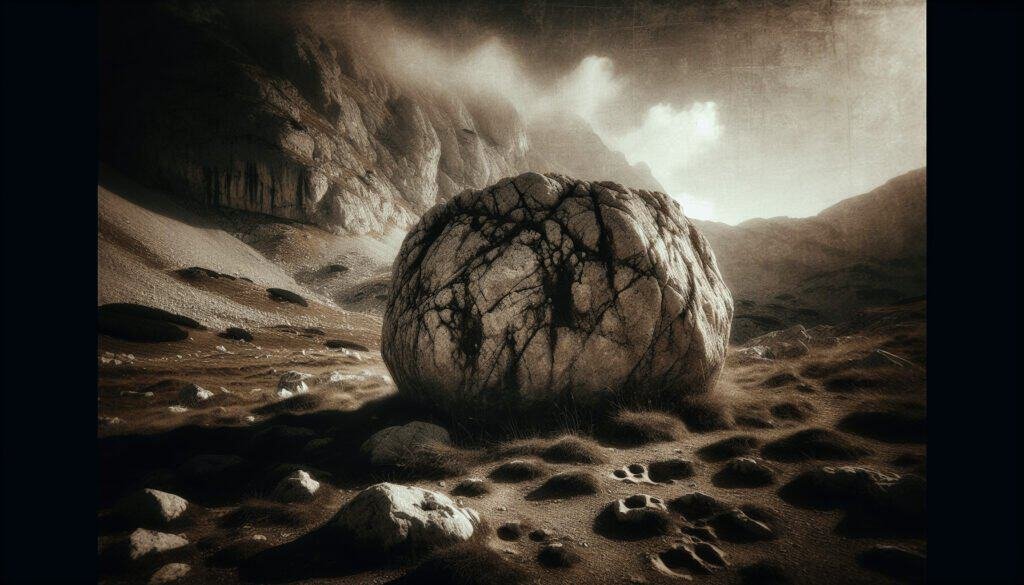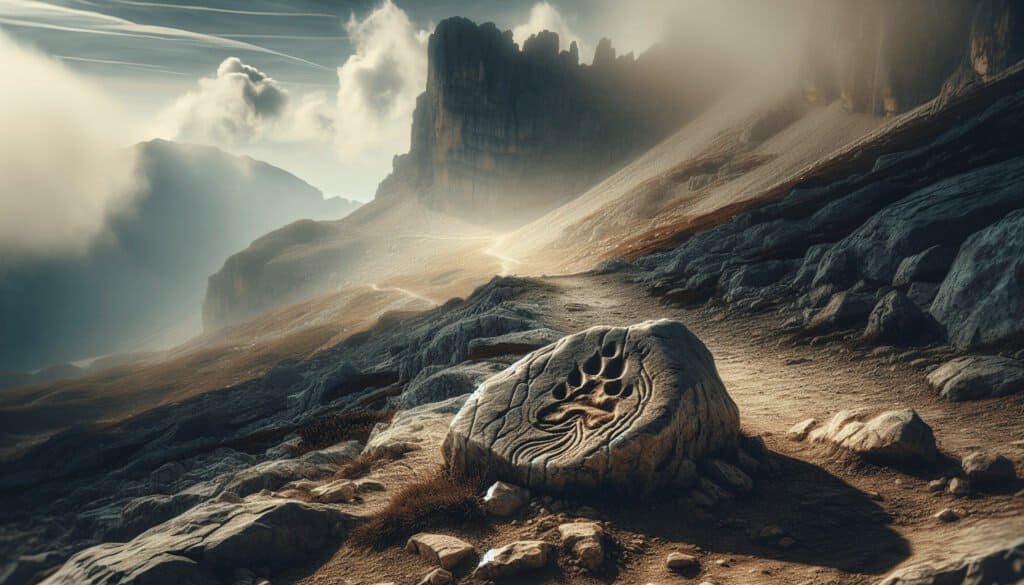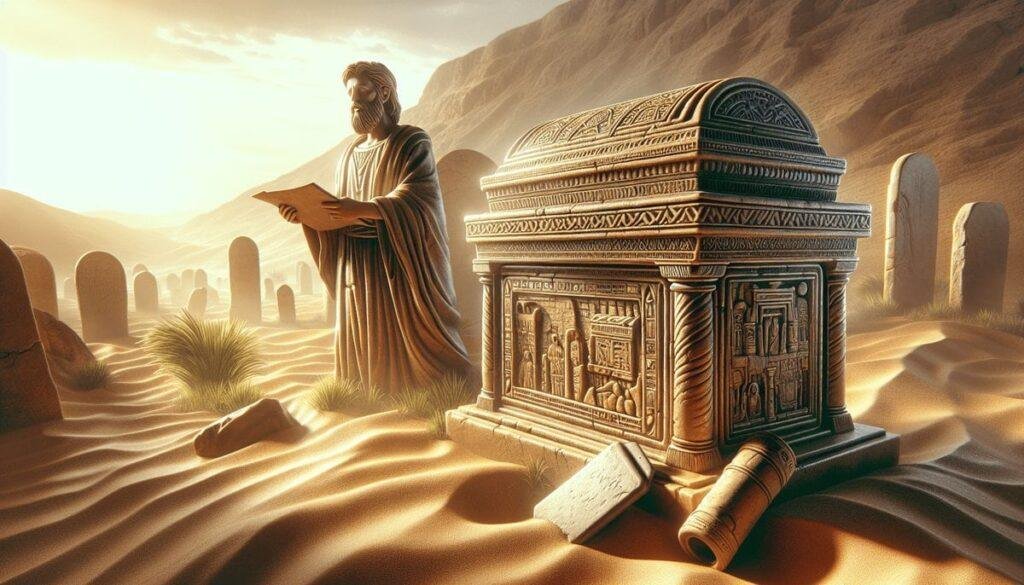What would you do if you stumbled upon a piece of ancient history while going about your daily life?
The Significance of the Donkey-Kicked Boulder
You may wonder why a boulder, seemingly ordinary, could hold such weight in history. The term “Donkey-Kicked Boulder” isn’t just a whimsical phrase; it symbolizes a rich tapestry of cultural and historical significance. This boulder has been associated with various trials and tribulations faced by individuals in ancient times. More than just a rock, it’s a testament to perseverance and the human spirit.
Historical artifacts like this boulder often tell stories that are long forgotten, echoing the struggles and triumphs of those who came before us. In many cultures, stones have been used as symbols of endurance.
Unpacking the Trials and Tribulations
To fully appreciate the Donkey-Kicked Boulder, let’s dissect the concept of trials and tribulations. In life, trials often represent challenges; tribulations are the difficulties we face amid those challenges. Ancient scriptures reverberate with these themes, chronicling struggles that lead to growth and enlightenment.
For instance, biblical narratives are replete with stories of individuals facing insurmountable odds, much like the metaphorical representation of a boulder as a heavy obstacle. The tales of resilience featured throughout these scriptures reflect the human condition, offering you insight into the cyclical nature of life.
The Scribes: Guardians of Knowledge
Who better to honor through the lens of the Donkey-Kicked Boulder than the scribes? These ancient writers were the custodians of history, culture, and law. They meticulously transcribed texts, ensuring that knowledge could withstand the ravages of time.
The Role of Scribes in Ancient Cultures
In different civilizations, scribes have played crucial roles. From Mesopotamia to Egypt, their expertise in the written word made them invaluable. Let’s highlight some of their responsibilities:
- Record Keepers: Scribes documented everything from tax records to significant events.
- Literary Scholars: They copied and preserved literary works, including poetry and stories, passing down cultural heritage.
- Legal Experts: They were integral in writing laws and administrative documents, aiding the governance of societies.
Emphasizing their contributions underscores how much of our understanding of the past is rooted in their painstaking efforts to encode history.

Archaeological Findings: The Search for Evidence
You might be curious about how the Donkey-Kicked Boulder fits into this grand narrative. Archaeological studies have repeatedly demonstrated the significance of physical artifacts in understanding historical contexts. Numerous excavations have unearthed artifacts, documents, and structures that provide insights into the lives of those who dwelled in the shadows of impressive boulders.
Past Discoveries
- The Rosetta Stone: Found in 1799, this artifact enabled scholars to decipher Egyptian hieroglyphs.
- Dead Sea Scrolls: These ancient texts provide a wealth of information about early Jewish practices and beliefs.
Each find is a chapter in the story of humanity, showcasing our resilience, creativity, and struggles—concepts embodied by the Donkey-Kicked Boulder.
Theological Context: Trials and Tribulations in Scripture
The mention of trials and tribulations isn’t merely an academic discussion; it significantly permeates theological texts. In Christian scripture, for example, many passages offer insights into enduring hardships. The Book of James addresses the idea of finding joy in trials, a sentiment that resonates with the symbolism of the boulder.
Key Scriptures
- James 1:2-4: “Consider it pure joy, my brothers and sisters, whenever you face trials of many kinds…”
- Romans 5:3-4: “Not only so, but we also glory in our sufferings, because we know that suffering produces perseverance…”
These verses highlight that trials and tribulations often lead to growth and understanding, inviting you to reflect on the nature of your challenges.

Cultural Significance: Stones as Symbols
Stones have held cultural weight in many societies. The Donkey-Kicked Boulder can be viewed as a representative of pivotal struggles, with each scratch and scar reflecting tales of perseverance.
Folklore and Tradition
In various cultures, stones symbolize strength, memory, and history. Take a look at how different societies perceive stones:
| Culture | Symbolism |
|---|---|
| Native American | Strength, stability, spirit |
| Greek | Endurance, timelessness |
| Hebrew | Covenant, promise |
You can see how these symbols connect us to ancient beliefs, underscoring how stones continue to shape our narratives.
The Modern Perspective: Learning from the Past
As you stand before a boulder today, it serves as a prompt to reflect on the lessons learned through trials and tribulations. This ancient rock calls for introspection on the resilience reflected in those who lived in its shadow.
Contemporary Challenges
Life today still brings its own set of challenges. Economic hardships, personal loss, and social injustice can feel like boulders in your path. The stories of ancient resilience remind you of the strength inherent within yourself to overcome these obstacles.
The Legacy of the Donkey-Kicked Boulder
Through all the ups and downs, the Donkey-Kicked Boulder stands firm, encouraging you to honor the narratives of those before you. This rock serves as both a reminder of past struggles and a symbol of unwavering strength.
Resonating with Modern Day
Just as scribes recorded history, you too have a unique story to tell. Think of your personal “boulders” and how they shaped who you are today. Embrace the challenges, ensuring that your experiences contribute to a broader narrative, just like those stones of yore.
Strengthening Knowledge: The Academic Approach
For those with a thirst for deeper understanding, engaging with primary texts and archaeological findings provides invaluable insights. Academic journals on biblical archaeology can illuminate aspects of the Donkey-Kicked Boulder you may not have considered.
Exploring publications dedicated to ancient history allows you to analyze findings through various lenses. This critical examination enriches your understanding and broadens the context in which these artifacts exist.
A Journey Towards Wisdom
The trials and tribulations represented by the Donkey-Kicked Boulder lead us to embody a certain wisdom. This wisdom stems from acknowledging that every struggle is wrapped in lessons worth learning.
Reflection and Growth
Take a moment to consider how your daily challenges can mirror the historical context of this boulder. Upon reflection, you may realize that your own journey holds wisdom that contributes to a collective human experience. The act of sharing and learning from one another puts you in the grand tapestry of history.
Trustworthiness in Scholarship
When dealing with ancient texts and archaeological figures, it’s essential to address how trust plays into understanding them. Relying on credible sources enhances your comprehension and allows you to view history through a scholarly lens.
Recognizing Credible Sources
As you seek out information, consider these factors to determine the trustworthiness of a source:
- Authorship: Research the qualifications and backgrounds of authors.
- Reputation: Look for institutions or publishers that are well-respected in the academic community.
- Citations: Quality sources typically cite reputable references, providing context for the information presented.
Conclusion: Tying it All Together
As you traverse through life, reflecting on the symbolic weight of the Donkey-Kicked Boulder, consider the stories glimpsed through its surface. Scribes represent the heart of knowledge, preserving trials and tribulations that resonate through time, urging you to learn, endure, and grow.
The journey through these ancient themes enriches your understanding of the modern world. Each challenge faced has the power to carve the same elegance into your narrative as the boulders that have withstood the test of time. Through trials, you can transcend limitations and truly flourish amidst the chaos and difficulties of existence.
Every time you encounter a stone—be it a boulder or a pebble—let it remind you of the unwavering strength found within the human spirit. You are part of a lineage that has, for eons, engaged with the world around them, leaving behind stories echoing the trials and triumphs worthy of remembrance.


